Father of Modern Art: Paul Cézanne
January 19th marks the birthday of one of the prominent French artists of Post-Impressionism – Paul Cézanne. He is often regarded as the father of...
Valeria Kumekina 5 June 2024
Vincent van Gogh’s relationship with nature was complex, and it defined both his life and his art. The Dutch artist hated the hustle and bustle of the city, seeking comfort and inspiration in the countryside. Through his landscapes and nature-inspired paintings, we can take a glimpse into his moods and overall character, which made him a forerunner of the Expressionist movement. The letters between Van Gogh and his brother Theo are a true treasure trove to the mind of the artist and the importance of nature in his art.
If I felt no love for nature and my work, then I would be unhappy.
Letter to his brother Theo, from The Hague, 26 July 1882.
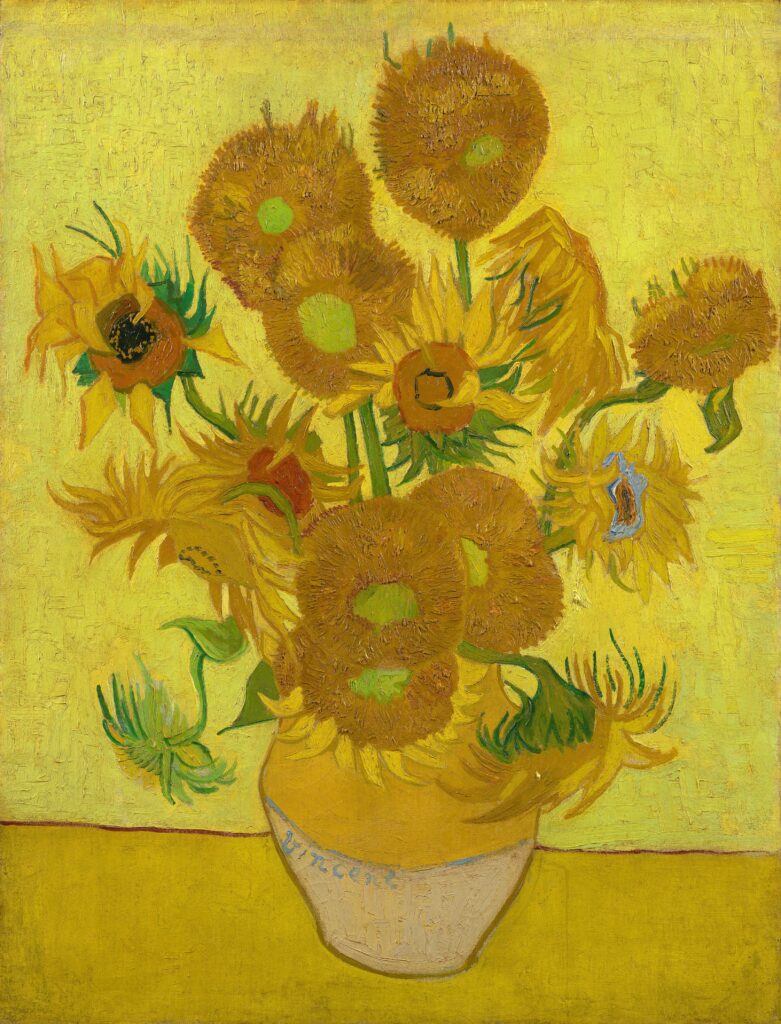
Vincent van Gogh, Sunflowers, 1889, Van Gogh Museum, Amsterdam, Netherlands.
Van Gogh adored sunflowers. For him, they represented loyalty and devotion, and yellow was the color of happiness. He became so completely identified with them that his friends brought sunflowers to his funeral.
Van Gogh did several versions of them, the most famous being the ones in a vase, which he completed in Arles. He used some of them to decorate the room of his friend and fellow painter Paul Gauguin, who had decided to come to live and work with van Gogh in the French countryside.
It is remarkable that he could create a painting with just three shades of yellow and a few blobs of green to give it life.
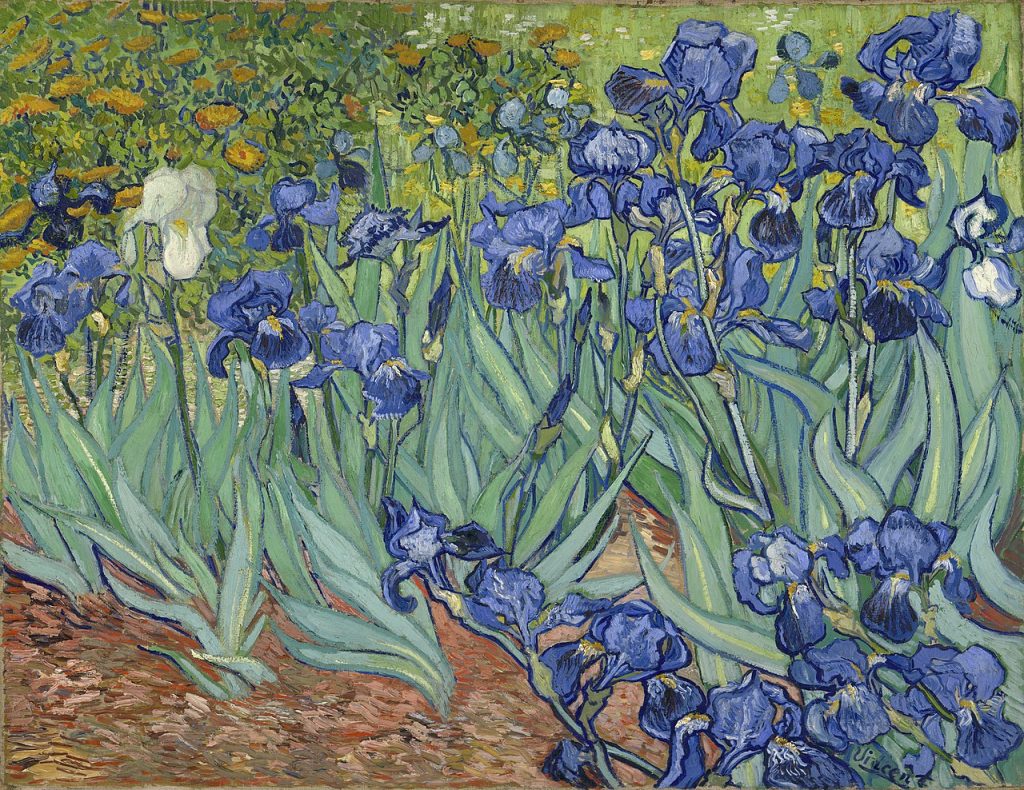
Vincent van Gogh, Irises, 1889, J. Paul Getty Museum, Los Angeles, CA, USA.
Following the deterioration of his mental health and the infamous ‘’ear incident’’, Van Gogh admitted himself to an asylum in Saint Remy. Unable to work in open nature, he began to paint the flowers in the asylum’s garden.
Studying this piece, we can see the influence of Japanese prints on his style; notice the flat colors, cropped composition, and huge irises spanning the entire canvas.
Theo submitted this painting along with Starry Night over the Rhone in the Salon des Indépendants in September 1889, writing to Vincent about the exhibition:
[It] strikes the eye from afar. It is a beautiful study full of air and life.
Letter to Vincent van Gogh.
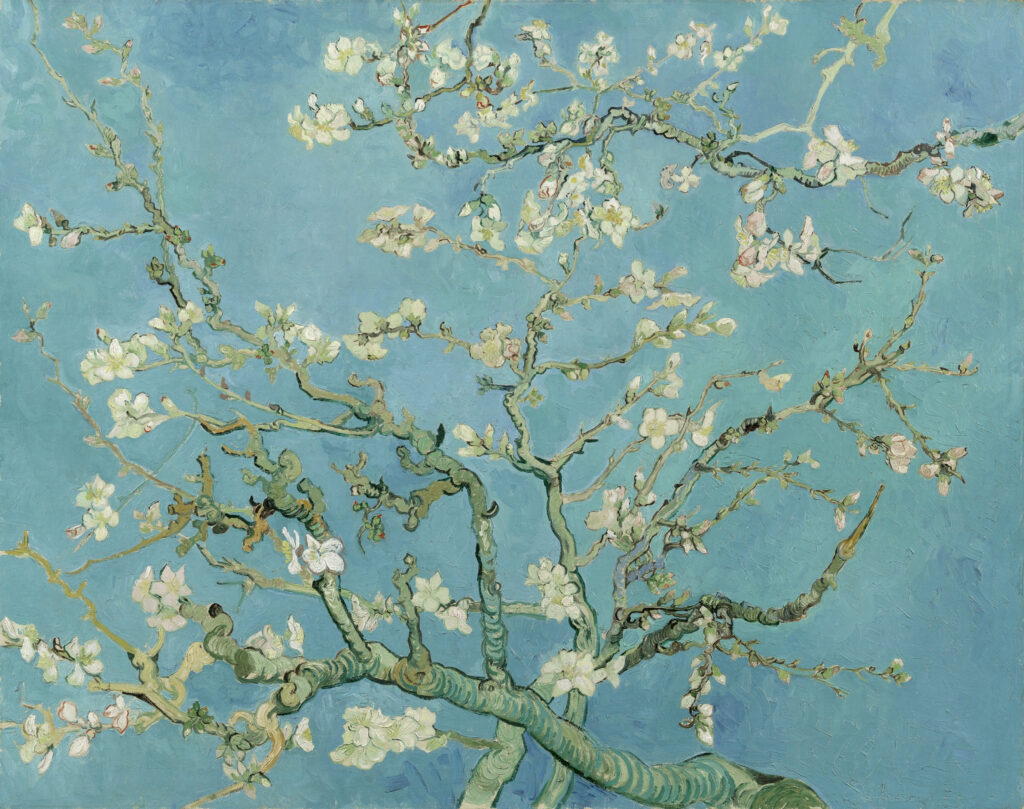
Vincent van Gogh, Almond Blossom, 1890,Van Gogh Museum, Amsterdam, Netherlands.
Almond Blossoms were another favorite of Van Gogh. There are many renditions of the subject, from a small twig inside glass to a blooming tree. Perhaps the most famous of Vincent van Gogh’s nature paintings are the blossoming almond branches under a blue sky. Almond blossoms are the first flowers of spring, signaling nature’s rebirth after the long winter.
Van Gogh created this piece on the birth of his nephew, who took his name. At the time, he had been an inmate in Saint-Remy for almost a year. In the letters to his brother, Theo, he writes of his dissatisfaction with spending so many hours indoors away from his beloved nature.
But what a beautiful land and what beautiful blue and what a sun. And yet I’ve only seen the garden and what I can make out through the window.
To Theo from Saint-Rémy-de-Provence, c. 31 May- 6 June 1889.
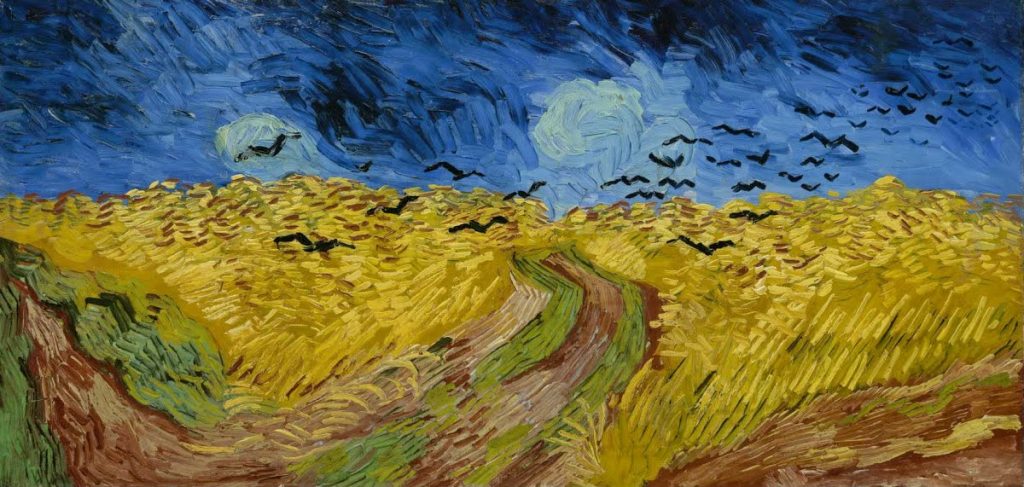
Vincent van Gogh, Wheatfields with Crows, 1890, Van Gogh Museum, Amsterdam, Netherlands.
During his final months in Auver sur Oise, Van Gogh painted a series of wheatfields around the small village.
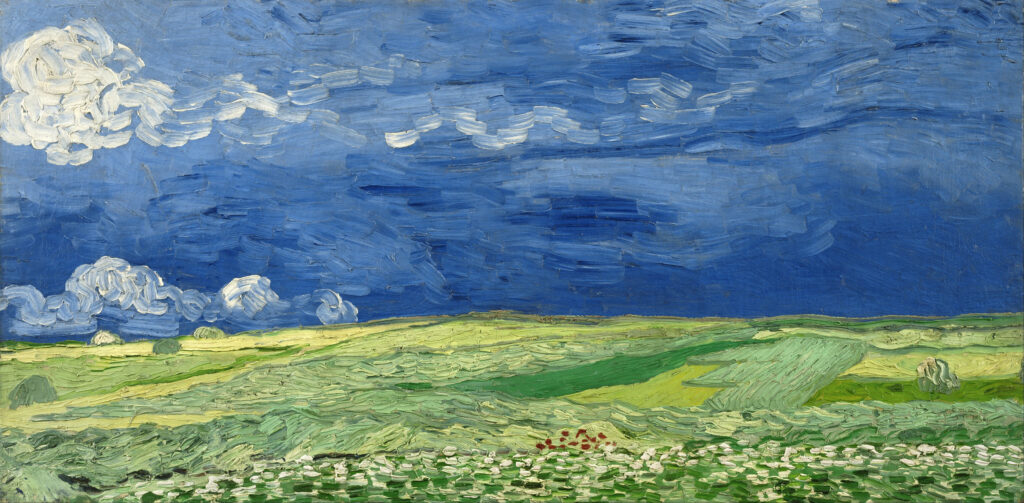
Vincent van Gogh, Wheatfields Under Thunderclouds, 1890, Van Gogh Museum, Amsterdam, Netherlands.
The turbulent skies and the path that leads to nowhere convey his feelings of sadness and loneliness; however, Van Gogh also found a positive note to add to them. In his own words:
I’d almost believe that these canvases will tell you what I can’t say in words, what I consider healthy and fortifying about the countryside.
To Theo Van Gogh from Auver sur Oise c.10 July 1890.

Vincent van Gogh, Tree Roots, July 1890, Van Gogh Museum, Amsterdam, Netherlands.
It is usually believed that Wheatfield with Crows was Van Gogh’s last painting, but that is not true. In contrast, the half-finished Tree Roots were sitting on his easel at the time of his death.
While the painting looks abstract at first, we soon realize it shows a slope with tree trunks and roots. Too much rain has fallen, exposing the roots of the trees and bringing them to the point of collapse. Van Gogh was aware of his deteriorating mental state, so this work is often seen as a farewell message from the artist himself.
Van Gogh called the painting “the lightning conductor for my illness”, meaning that he could manage his mental problems while he was painting. He painted flowers and the French countryside like no one else, instilling in them a part of himself. We hope you enjoyed learning about Vincent van Gogh’s nature paintings.
DailyArt Magazine needs your support. Every contribution, however big or small, is very valuable for our future. Thanks to it, we will be able to sustain and grow the Magazine. Thank you for your help!